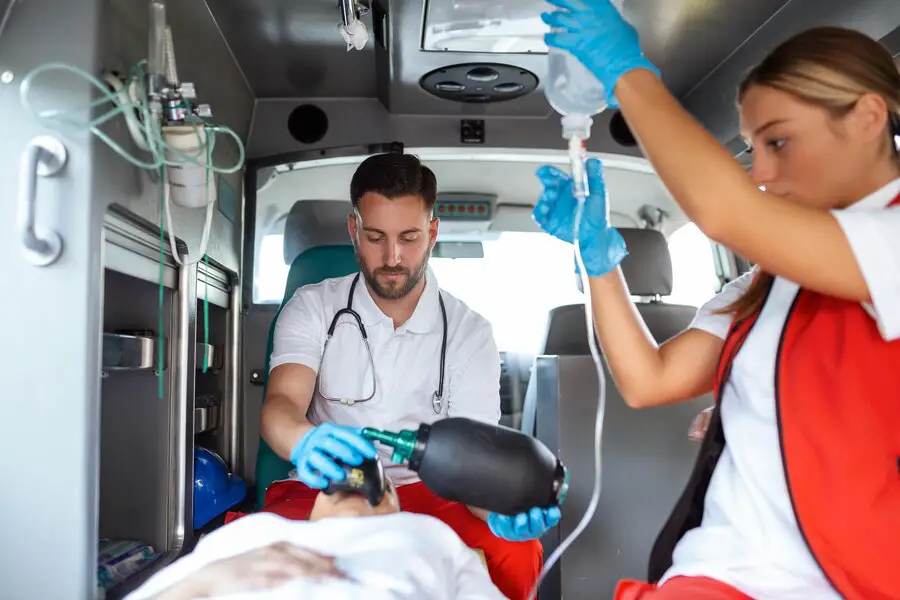The Unsung Heroes Disaster Relief Nurses

In the aftermath of natural or man-made disasters, amidst chaos and devastation, there emerges a group of individuals whose commitment and compassion shine brightly—disaster relief nurses. These unsung heroes play a pivotal role in providing critical healthcare services to those affected by calamities, often working in challenging conditions to deliver care and comfort to the most vulnerable.

Page Contents
The Unsung Heroes Disaster Relief Nurses
The Role of Disaster Relief Nurses: Disaster relief nurses are a specialized subset of healthcare professionals trained to respond swiftly and effectively in emergency situations. Their responsibilities encompass a wide range of tasks, from triaging and treating injuries to providing psychological support to survivors. These nurses work tirelessly to alleviate suffering and prevent further health complications in the aftermath of disasters.
Immediate Response: When disaster strikes, whether it be a hurricane, earthquake, or humanitarian crisis, disaster relief nurses are among the first responders on the scene. They work alongside other emergency personnel to assess the situation, establish temporary healthcare facilities, and prioritize care based on the severity of injuries. Their quick thinking and decisive actions are instrumental in saving lives during the critical initial hours following a catastrophe.
Medical Triage and Treatment: One of the most crucial roles of disaster relief nurses is triaging patients to determine the urgency of their medical needs. In chaotic environments where resources are limited, they must make rapid assessments and allocate resources efficiently. From providing first aid to performing life-saving procedures, these nurses are adept at delivering quality healthcare under pressure.
Psychological Support: In addition to physical injuries, disasters often leave survivors traumatized and emotionally distressed. Disaster relief nurses play a vital role in providing psychological first aid and emotional support to those affected. They lend a compassionate ear, offer reassurance, and connect survivors with mental health resources to help them cope with the aftermath of the disaster.
Community Outreach and Education: Beyond immediate medical care, disaster relief nurses engage in community outreach and education to promote resilience and preparedness for future disasters. They collaborate with local authorities and organizations to develop disaster response plans, conduct training sessions, and raise awareness about essential health and safety measures. By empowering communities to better withstand and recover from disasters, these nurses contribute to long-term resilience and sustainability.
Challenges and Rewards: Working in disaster relief settings presents numerous challenges, including limited resources, hazardous conditions, and emotional strain. Despite these obstacles, disaster relief nurses remain steadfast in their commitment to serving those in need. The satisfaction of making a meaningful difference in people’s lives, often during their darkest hours, serves as a powerful motivator for these dedicated professionals.
In the wake of natural or man-made disasters, amidst the chaos and devastation, there emerges a group of individuals whose commitment and compassion shine brightly—disaster relief nurses. These unsung heroes play a pivotal role in providing critical healthcare services to those affected by calamities, often working in challenging conditions to deliver care and comfort to the most vulnerable.

| Role of Disaster Relief Nurses | Description |
|---|---|
| Immediate Response | Disaster relief nurses are among the first responders on the scene, working alongside other emergency personnel to assess the situation and establish temporary healthcare facilities. |
| Medical Triage and Treatment | They triage patients to determine the urgency of medical needs, provide first aid, and perform life-saving procedures in environments where resources are limited. |
| Psychological Support | Disaster relief nurses offer psychological first aid and emotional support to survivors traumatized by the disaster, helping them cope with the aftermath. |
| Community Outreach and Education | They engage in community outreach, collaborate with local authorities to develop disaster response plans, and conduct training sessions to promote resilience and preparedness. |
Triage and Treatment in Disaster Relief Nursing:
When disaster strikes, disaster relief nurses become frontline responders, facing the daunting task of triaging and treating injuries amidst chaos and often with limited resources. Their role in this critical phase is multifaceted and requires quick thinking, adaptability, and a solid understanding of emergency medical protocols.
- Triage Process: Disaster relief nurses are trained to prioritize patients based on the severity of their injuries and the resources available. They utilize triage systems such as the Simple Triage and Rapid Treatment (START) or the more comprehensive SALT (Sort, Assess, Lifesaving interventions, Treatment/Transport) method. This involves assessing patients’ vital signs, mobility, and the nature of their injuries to determine the order of treatment.
- Resource Allocation: In disaster situations where medical supplies and personnel may be scarce, disaster relief nurses must make difficult decisions regarding resource allocation. They prioritize interventions that are most likely to save lives and prevent further deterioration of patients’ conditions. This may involve improvising with available materials and adapting treatment plans to suit the circumstances.
- First Aid and Basic Medical Interventions: Disaster relief nurses provide immediate first aid and basic medical interventions to stabilize patients before they can be transported to more advanced care facilities. This may include wound cleaning and dressing, splinting fractures, controlling bleeding, and administering pain relief medications. Their ability to act swiftly and decisively can mean the difference between life and death for those in critical condition.
- Life-Saving Procedures: In situations where patients require urgent medical intervention to survive, such as airway management, cardiopulmonary resuscitation (CPR), or emergency surgical procedures, disaster relief nurses are trained to perform these interventions to the best of their abilities given the resources at hand. Their competence and composure under pressure are paramount in saving lives in high-stress environments.
- Continued Monitoring and Care: Even after initial treatment, disaster relief nurses remain vigilant in monitoring patients’ conditions and providing ongoing care as needed. They ensure that patients receive appropriate follow-up care and are stabilized for transportation to more comprehensive medical facilities if necessary.
In summary, the role of disaster relief nurses in triaging and treating injuries during emergencies is indispensable. Their ability to assess, prioritize, and provide essential medical care in the midst of chaos saves lives and mitigates suffering in the aftermath of disasters. These dedicated professionals exemplify courage, resilience, and compassion as they work tirelessly to heal and support communities in times of crisis.
Conclusion:
Disaster relief nurses embody the true spirit of altruism and resilience in the face of adversity. Their unwavering dedication, compassion, and expertise save lives and provide hope in times of crisis. As we reflect on the invaluable contributions of these unsung heroes, let us honor and support their tireless efforts to heal and rebuild communities affected by disasters.







